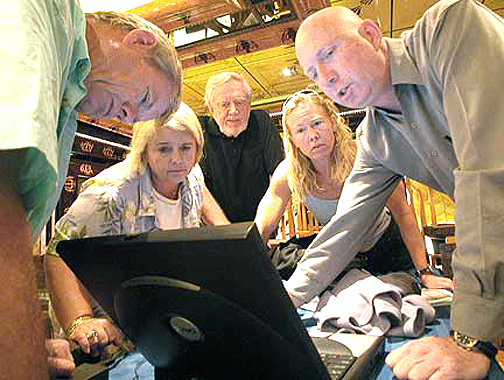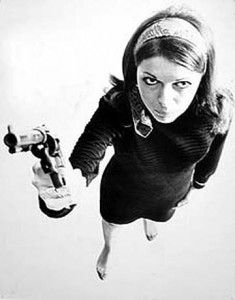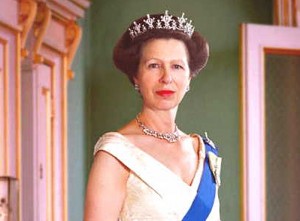Wider is Better
By Arthur H. Bleich–
Most amateur photographers lust for longer focal length lenses that bring distant subjects nearer. But most professionals will tell you that if they had to choose between a telephoto or a short focal length lens, they’d take the wide-angle every time.
First, it’s a very versatile lens, especially for shooting close-up action. It has great inherent depth of field; you can disengage your camera’s autofocus, set the lens at a fixed distance, and even if you need to use a moderately large lens opening, everything will usually stay in focus from up close to far away.
This gives you a great opportunity to shoot moving subjects in a low-light situation and concentrate on the action without worrying about missing good shots as your camera does a focus hunt. You can also get more people in a group shot without having to scrunch them together.
As you may know, depth of field depends on the subject distance focused on, the focal length of the lens, the f-stop that’s set, and the size of the sensor on your camera. If you’re using a prime wide-angle lens, depth of field information will be on the lens itself. But because zooms have variable focal lengths, it would be impossible to fit the information for all possibilities on the lens barrel; look it up at dofmaster.com/dofjs.html if you want to be precise.

Wide-angle lenses give great depth of field and visually exciting spatial separation.
Credit: © DPW Cruise
Wide-angle lenses can also give a marvelous feeling of space. Telephoto lenses compress things– like shots you’ve seen where the baseball pitcher seems as if he’s right against the center field fence. Wide-angles, on the other hand, expand the spaces between objects and subjects. And this can be used to create visually exciting images that the eye usually doesn’t see.
You can frame your shot so that parts of the picture in the foreground become large and imposing while the background falls off into space. Of course, this can also result in distortion– a characteristic of all wide-angle lenses. But it’s a good thing. Sometimes our eyes need to be forced to see the world with new vision.
Wide-angle lenses offer two other advantages. If you have a zoom lens, using its widest focal length will give you a stop or more of light compared to setting it at telephoto. How’s that? Well, apertures of zooms vary; if a lens has 1:3.5-5.6 engraved on it, then it’s f-3.5 at the widest end but only f-5.6 at full zoom.
Finally, wide-angle lenses (or setting your zoom to its widest setting) reduce camera shake considerably– you can use slower shutter speeds to shoot under low-light conditions and get good results that would be impossible to achieve with longer focal length lenses (or zooming to a telephoto setting).

Don’t worry about distortion; go for it!
Credit: © Erik Seth
If you have a zoom lens and its widest focal length is 28mm, that’s not enough. Buy an auxiliary wide-angle attachment that screws into your lens to convert that focal length to at least 24mm. If one’s available for your lens that takes it down to 21mm or wider, you’ll get even more dramatic results. Google “wide-angle lens adapters” and you’ll come up with lots of them.
Of course you may hear some disparaging remarks about using adapters on your lens but don’t let that stop you unless you want to spring for an expensive wide-angle prime lens or a wide-angle zoom. The results you’ll get with moderately-priced adapters should be just fine.
Now, with your wide-angle lens in place, move in close and see how different subjects and objects look. Don’t be hesitant to get really close to your subject –sometimes just inches– because that will give you a visually dominant foreground that plays against the distant background.
Shoot some exterior and interior scenes and enjoy a new visual world. You may even want to try some wide-angle close-ups of your family, friends or pets for humorous results; features closest to the camera will be huge while those further away will be diminished.
One caution. Like your passenger-side car mirror, objects will be physically closer to you than they appear in the viewfinder or monitor. So when you move in on a subject, keep that in mind. Which prompts this anecdote.

Princess Anne: Wide-angle lenses are definitely not her favorites.
Credit: Palace Publicity Photo
Some years ago I was on a magazine assignment to Quito, Ecuador to photograph the opening of a boy’s trade school funded by the British Government. Princess Anne, the maverick of the Royal Family, was scheduled to make some inaugural remarks.
I positioned myself inside the building near a door where she would enter and put a super-wide lens on my camera for a dramatic effect in which she would be extremely close up in the frame with the teachers and boys in the background.
When the Princess swept into the room I raised the camera to my eye and moved quickly toward her to frame the shot. Suddenly I heard an imperious (and annoyed) voice say loudly: “Do you mind?” It was followed by a sharp slap that sent me reeling backward and I ended up on the floor to the accompaniment of giggles from the boys lined up to greet her.
So remember– when you go wide be careful; you’ll probably never get slapped by a princess but neither do you want to get hit or bitten by a subject that’s closer than you think.
Original Publication Date: July 29, 2014
Article Last updated: July 29, 2014
Related Posts and Information
Categories
About Photographers
Announcements
Back to Basics
Books and Videos
Cards and Calendars
Commentary
Contests
Displaying Images
Editing for Print
Events
Favorite Photo Locations
Featured Software
Free Stuff
Handy Hardware
How-To-Do-It
Imaging
Inks and Papers
Marketing Images
Monitors
Odds and Ends
Photo Gear and Services
Photo History
Photography
Printer Reviews
Printing
Printing Project Ideas
Red River Paper
Red River Paper Pro
RRP Products
Scanners and Scanning
Success on Paper
Techniques
Techniques
Tips and Tricks
Webinars
Words from the Web
Workshops and Exhibits
all
Archives
December, 2024
November, 2024
October, 2024
September, 2024
August, 2024
July, 2024
June, 2024
May, 2024
April, 2024
more archive dates
archive article list




